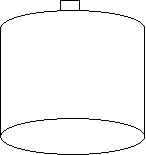Advertisements
Construction of Two Face Gas Burner
Content Structure of Construction of Two Face Gas Burner
- The abstract contains the research problem, the objectives, methodology, results, and recommendations
- Chapter one of this thesis or project materials contains the background to the study, the research problem, the research questions, research objectives, research hypotheses, significance of the study, the scope of the study, organization of the study, and the operational definition of terms.
- Chapter two contains relevant literature on the issue under investigation. The chapter is divided into five parts which are the conceptual review, theoretical review, empirical review, conceptual framework, and gaps in research
- Chapter three contains the research design, study area, population, sample size and sampling technique, validity, reliability, source of data, operationalization of variables, research models, and data analysis method
- Chapter four contains the data analysis and the discussion of the findings
- Chapter five contains the summary of findings, conclusions, recommendations, contributions to knowledge, and recommendations for further studies.
- References: The references are in APA
- Questionnaire
Chapter One of Construction of Two Face Gas Burner
INTRODUCTION
Advertisements
The construction of a two-face gas burner as a project topic that we embark upon become necessary as a way of way of putting into application the engineering and technological knowledge acquired so far. It is a starting point of actualizing a functional technology in the country. Irrespective of the fact that there are several breads of gas burners in the market, especially the ones imported, we deemed it necessary to work further on it as a way of modifying the brand with cast not left out in such modification.
LITERATURE REVIEW
The development of simple gas burner started in the eighteen countries when people began to use coal gas for burning. The application was fast put into practice by William Mulock who designed the simple gas cooker to be used in his office, home and workplace
The first experimental gas cooker was made and in use in 1850. The improvement of this has multiplied greatly and is up to date widely used in homes, restaurants and large catering establishments. The different types of gas cookers available in the in the market are based on skills and techniques of the designer or producer.
Based on the nature of energy supply, some gas cookers are made up of combustion devices of an electric heating element. The well-constructed ones are properly adapted and form an integral combustion of which of which they generate and utilize heat. It is often quite different to draw a line where heat generation stops and where heat utilization starts in a fuel forced cooker. That is the fuel fired cooker being on the pack in the market these days.
The releasing of heart starts with mixture of air and fuel gas in the nozzle and combustion of the mixture to release heart takes place at the burner.
SPECIFICATION OF PROBLEM
In the course of fabricating the two-face gas burner, as a copied project with some propose modification, some condition which ought to be met are found as a standard of comparison with the already existing ones. This posed a difficulty in the course of this construction. Since choice between already existing gas cooker lies on service available, durability, connivance cost.
The following specifications were considered a problem when we started the design.
- PORTABILITY.
How to fabricate a two-face gas burner that will occupy the minimum space in the kitchen was a problem. A two-face gas burner that is easily to be met in met in our design.
- To construct a two-face gas burner that will be safe to any prospective user.
- To constructs a two-face gas burner that will be easy to maintain and wise gas will be free from unpleasant smell.
- To construct a two-face gas burner whose source of energy (fuel) will be local.
-
- COMPONENT PARTS AND THEIR FUNCTIONS
- Burner chamber
- Linkage pipe
- Hose
- Gas Cylinder (containing gas valve)
- Angle bar (material)
- Control knob or valve
- Connection pipe for gas flow
- Nut
- Rod.
THE BURNER: This being the main component where combustion takes place to release heat. There is gas delivery line, which leads to it in addition to an adjustment to control the rate of atmospheric air mixing with the natural gas

LINKAGE PILE: This is the pipe line through which natural gas flow to the burner. One is lined along the frame of the burner as seen.
THE GAS CYLINDER: This is the component of the gas burner that containing the gas fuel through which a hose as connected to the copper pipe of the burner through the gas passes to the burner for combustion.




MILD STELL PLATE this is used as a covering or a wall for the gas burner. It also serves as a seat for the values.
CHAPTER TWO
COMBUSTION MECHANISM/THEORY OF THE GAS BURNER
DESCRIPTION OF COMBUSTION DEVICE.
There are different types of commercially fixed gas burner and combustion equipment in which usage. Some knowledge of this type of burner, combustion and aerodynamics within a plant is therefore essential if a physical study is to be a success.
The combustion equipment is usually selected to satisfy a range of design requirement including firmly rate, flame length and shape, temperature and combustion product. All these factors influence the heat transfer, hence the thermal efficiency of the burner in a particular and on the nature on its aerodynamics behaviour when installed in plant.
In practice, many burner fall into categories which has deterring implication
PRE-MIX OR NOZZLE AIR BAST BURNER
In both cases, flame stabilization is commonly achieved by employing a refractory tunnel downstream at the burner head with combustion substantially completed within the tunnel. This
Advertisements




